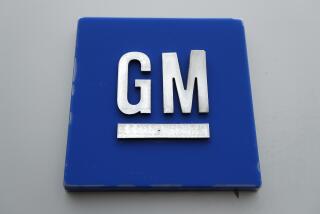Number of Jets With Mechanism Problems Rises to 19
- Share via
The number of U.S. jets discovered to have possible tail wing anomalies climbed to 19 Saturday afternoon, two weeks since the mechanism first came under scrutiny in the wake of the Alaska Airlines crash off Anacapa Island.
Investigators have not determined whether damage to the horizontal stabilizer assembly found in the wreckage caused the crash or was a result of the crash’s impact. Pilots had reported trouble with the stabilizer before the crash.
But metal shavings in the assembly uncovered in two Alaska Airlines planes Thursday prompted the Federal Aviation Administration to order inspections on all 1,100 U.S.-registered DC-9, MD-80 series, MD-90 series and Boeing 717 jetliners that use the mechanisms. The checks are to be completed by Monday evening.
FAA officials have said they are specifically interested in inspections that turn up slivers of metal along the 24-inch, bolt-like jackscrews that drive the stabilizer, which helps keep planes level. The gimbal nut--which rides the jackscrew--was recovered from the Flight 261 crash site with damaged threads.
By Saturday the FAA received more than a dozen reports concerning the jackscrew assembly, including metal shavings found in jackscrew lubricant, metallic residue in the grease and a jackscrew with no lubricant.
Alaska Airlines said it reported six of its jets with jackscrew assembly anomalies to the FAA, in addition to the original two that prompted the FAA order. Delta Airlines reported four, AirTran found two, and American, Continental, TWA, Northwest and Hawaiian Air each had one, FAA officials said.
Whether the findings meant the planes would have been dangerous to fly was unclear Saturday and the FAA called it “premature to draw any conclusions.”
“The significance of the findings will not be known until a detailed inspection of the part can be made,” said FAA spokesman Eliot Brenner. Planes with damage in the jackscrew area have to be repaired before they are placed back in service.
Meanwhile, Alaska Airlines said it had inspected all 34 of its Boeing MD-80 aircraft as of Saturday. “All 21 aircraft that we’ve returned to service have been inspected, not once, but twice, and given a clean bill of health,” said the airline’s president, Bill Ayer.
The two Alaska Airlines planes that reported jackscrew anomalies Thursday remain grounded. How long they or the other six will remain out of service is unclear.
Delta Airlines spokeswoman Peggy Estes said two of Delta’s four affected jets were back in service Saturday evening and two remained grounded, undergoing further inspections. Residue was found around the jackscrew assembly in each of the cases, she said, but she did not elaborate. As of Saturday evening, 86 of the carrier’s 136 planes affected by the directive had been inspected.
Some airlines reported minor disruptions in travel as a result of the groundings and inspections. Alaska said that at least 50 of its daily departures have been affected, and that additional cancellations were possible today and Monday.
More to Read
Sign up for Essential California
The most important California stories and recommendations in your inbox every morning.
You may occasionally receive promotional content from the Los Angeles Times.










